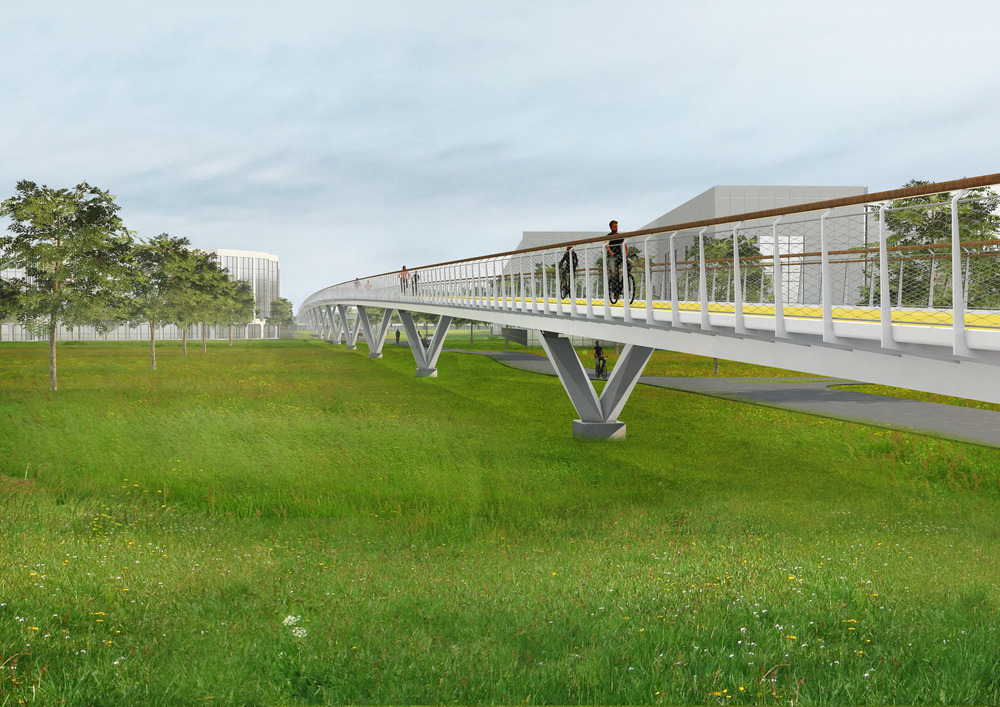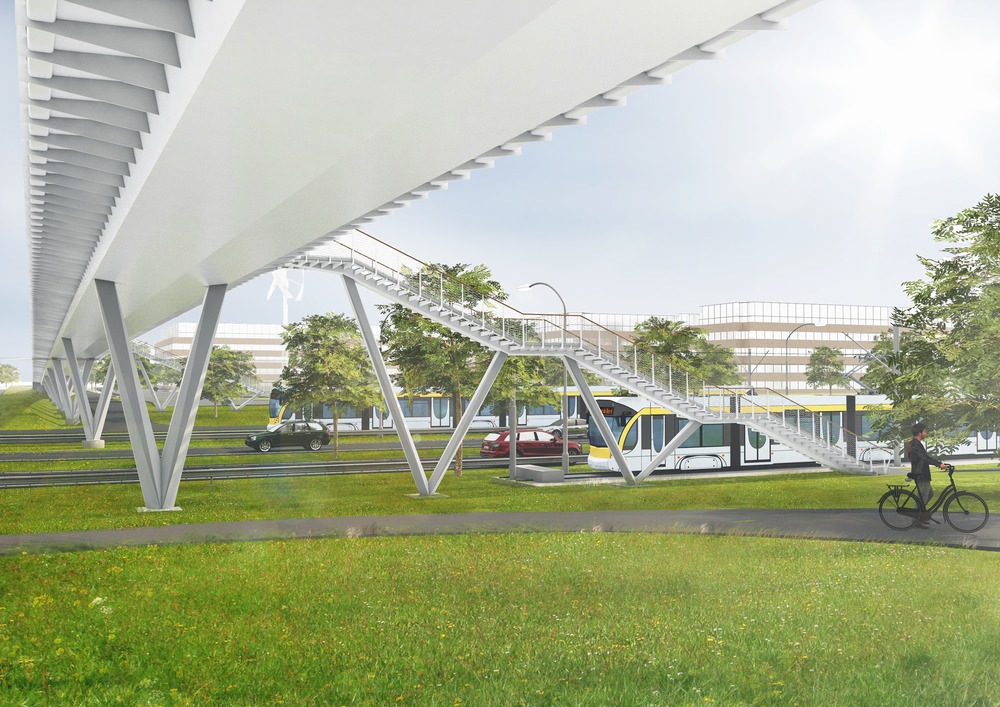- 14 December 2022
- 862 defa okundu.
Construction Begins on Longest Bicycle and Pedestrian Bridge in Flanders, Belgium
The first symbolic meter of the longest bicycle and pedestrian bridge in Flanders, Belgium has been laid. As part of the MoVeR0 consultancy consortium, and commissioned by De Werkvennootschap, architectural studio ZJA produced the architectonic design for the cycle bridge over the A201 Leopold III-Laan in Brussels. With a total length of 710 meters – including a 510 meter-long deck and 200 meters of sloping approaches – the bridge is a striking feature in the urban landscape. Construction starts in December, and the bridge will be open for use in 2024.

Imposing bridge with V-shaped columns
Ralph Kieft, architect, and partner at ZJA, says, “To make this imposing bridge fit its surroundings, we gave it as light and transparent a silhouette as possible. To achieve this, the white bridge is made of steel and rests on V-shaped grey steel columns with cut-away corners. With its gradual gradient in a continuous upward curve, and its perfectly straight trajectory, the cycle bridge makes a long, fluid gesture that marks the boundary between Flanders and the Brussels-Capital Region.”

Comfortable bicycle and pedestrian bridge
Pedestrians, as well as cyclists, will be able to use the bridge. It has a cycle path and a footpath, distinguished from each other by their coloured surfaces. The cycle path is a brownish yellow or light ochre, and the footpath is anthracite in colour. This distinction ensures a safe and easily legible layout on the bridge. At its highest point, over the highway where cars and trams pass, the deck is almost eight meters above street level. The steps that give access to the bridge at the tram stop match the design and appear transparent. They are also elongated and shallow enough to ensure a comfortable climb to the bridge deck.

Because the bridge is so long and straight, its details, which repeat many times along the length of the bridge, create a fascinating visual effect. The corbelled ribs under the deck, supporting the pedestrian footways, have a fixed rhythm and flow into the balustrades. The resulting impression is of a regular rhythm that conforms to the fluid line of the bridge deck as it rises, making the bridge seem lighter, floating above the highway and pointing towards the horizon.

Important link in the cycle network around Brussels
The A201K bicycle and pedestrian bridge designed by ZJA not only creates a safe crossing of the Leopold III-Laan, it forms a previously missing link in the cycle network in and around Brussels. The new bridge will improve accessibility and quality of life for the surrounding area and in particular the traffic safety and mobility of cyclists and pedestrians.
Work on the Ring
The A201K bicycle and pedestrian bridge form part of the ‘Work on the Ring’ program, with which De Werkvennootschap intends to create better mobility on and around the ring road that encircles Brussels and to improve the quality of life for those who live there. To achieve this, the investment will be made in the coming years in better public transport, the redevelopment of the Ring, and safe, rapid connections for cyclists.

